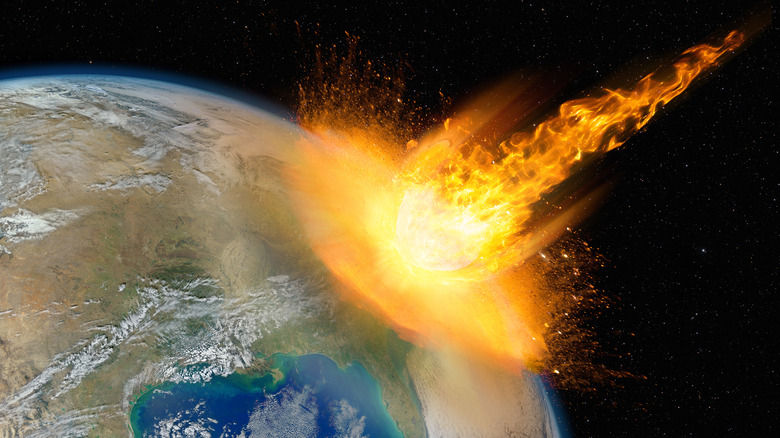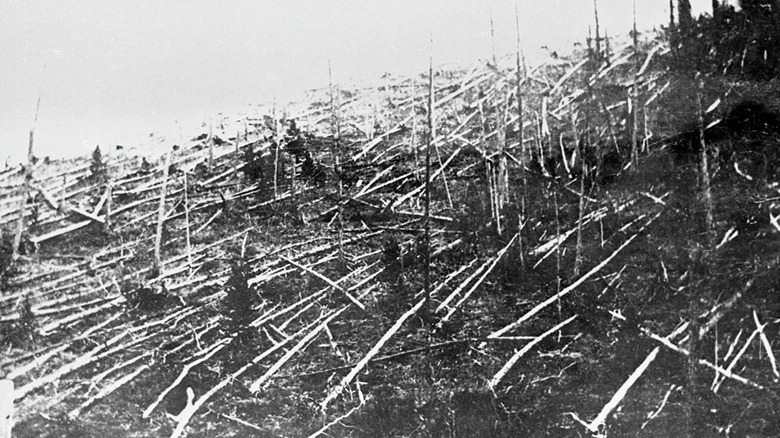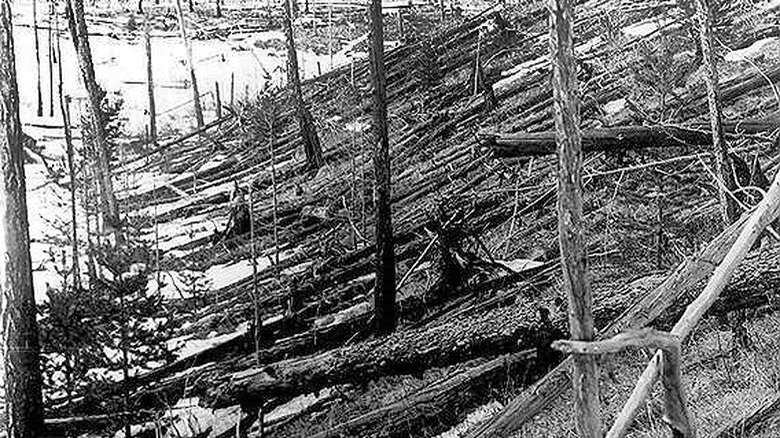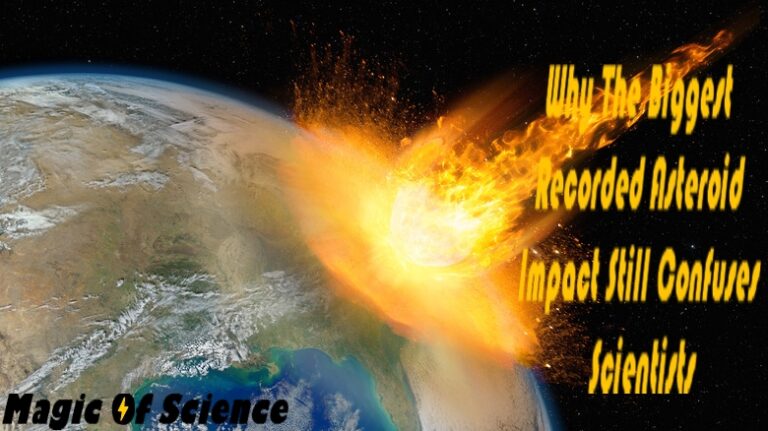Why The Biggest Recorded Asteroid Impact Still Confuses Scientists
According to Marina Brozovic, a scientist at NASA’s Jet Propulsion Laboratory (JPL) in California, the Earth is constantly bombarded by asteroids. Because they are so small, most burn up in the atmosphere before ever reaching the ground. However, in March 2022, an asteroid the size of a refrigerator entered the Earth’s atmosphere above a remote Norwegian island roughly 300 miles northeast of Iceland. Witnesses in Iceland said they saw a bright flash, a sign that this space rock became a fireball, but no meteorites have been found as of yet.

Jump back 114 years to 1908. At around 7:13 a.m. (local Siberia time) on June 30, something happened near the Podkamennaya Tunguska River in Siberia, Russia. This event has since become known as “The Tunguska Event.” The generally accepted theory is that either an asteroid or comet entered Earth’s atmosphere and exploded about 15,000–30,000 feet (3 – 6 miles) above the river.
The resulting explosion was comparable to 15 megatons of TNT, one thousand times more potent than “Little Boy,” the atomic bomb dropped on Hiroshima during WWII. In fact, it would have been similar to dropping not one but 185 of those very same bombs. The mid-airburst decimated an 800 square mile area (500,000 acres) of forest and flattened over 80 million pine trees.
According to David Morrison, a planetary science researcher at NASA’s Ames Research Center, “Tunguska is the largest cosmic impact witnessed by modern humans.” Surprisingly, an investigation of the site didn’t happen until 1927, when an expedition led by Leonid Alekseyevich Kulik from the St. Petersburg museum reached Tunguska.
A fireball event lays waste to 800 square miles of forest

When Kulik arrived, he found trees flattened out radially as far as 20 miles from the blast’s epicenter (via Britannica), which was so scorched that even nineteen years later, very little foliage or trees had begun to regrow. Yet, he never found an impact crater or any fragments indicating what caused the explosion.
The concussive force of the explosion created a magnitude 4.5 to 5 earthquake. According to NASA, shockwaves were recorded more than 3,100 miles away in London, and the blast was heard 700 miles away. Thousands of reindeer perished, but very few people died. Calculations suggest the vast volumes of gas expelled into the atmosphere when the object vaporized caused the night skies in Asia, Paris, and London to remain illuminated for days (via WNYC Radio).
While thousands likely observed something that morning, it took decades to record any eyewitness accounts officially. Most of them had since turned into second-hand retellings from original eyewitnesses. Many focused on the fireball streaking across the sky, the ground shaking, and the hot winds strong enough to knock people down and shake buildings (via Britannica).
But in 2008, new facts emerged from previously unknown first-hand accounts. In 1948 Russian ethnographer and historian Sev’yan Vainshtein went to the Sulomay region to study the local people known as the Ket. According to Forbes, Sulomay lies 358 miles west of where the Tunguska event occurred and is considered the farthest point from the epicenter where trees were knocked down.
Most of the information Vainshtein gathered aligned with what was already known… except for one relatively major detail. Until then, people thought the bright lights observed around the globe happened the night after the explosion, but according to the Ket, that event actually occurred the night before (via Forbes).
Did 80 million Siberian trees get flattened by a mere flyby?

Since Kulik’s 1928 expedition, more than forty others have ventured into the Tunguska region (via Forbes), but tests on environmental samples such as soil, trees, and rocks were always reportedly inconclusive. Then, in 2013, Andrei E. Zlobin from the Russian Academy of Sciences’ claimed he found the first meteorites from the Tunguska event, but the results were again unclear.
That same year a small asteroid exploded 12 miles above the city of Chelyabinsk, Russia. This event is considered very similar to what happened in Tunguska. In this case, fragments from this midair explosion made it to the ground and were collected quickly. The fireball was seen by thousands and caught on video by many people from many directions. This event has since allowed scientists, including NASA, to extrapolate much-needed data and run computer models against the Tunguska event. Still, large asteroids so rarely break up in Earth’s atmosphere that a great deal of uncertainty about them remains.
Another theory suggests that a meteor narrowly missed Earth and only grazed it before veering back into space. It would explain why no fragments have ever been found. Helping to substantiate this idea is the fact that the Earth passes by what is known as the “Taurid swarm” of meteors twice a year. Scientists have since calculated that the Earth was passing through this swarm at the time of the Tunguska event.
With so many theories, no objective conclusive evidence, and the fact that memories are notoriously unreliable and distorted over time, we may never know what happened in Siberia 114 years ago. However, in all likelihood, the Tunguska event is probably exactly what we think it is: the universe’s way of showing us just how unpredictable any given event can be.
Do not forget to share your opinion with us to provide you with the best posts !




0 Comments